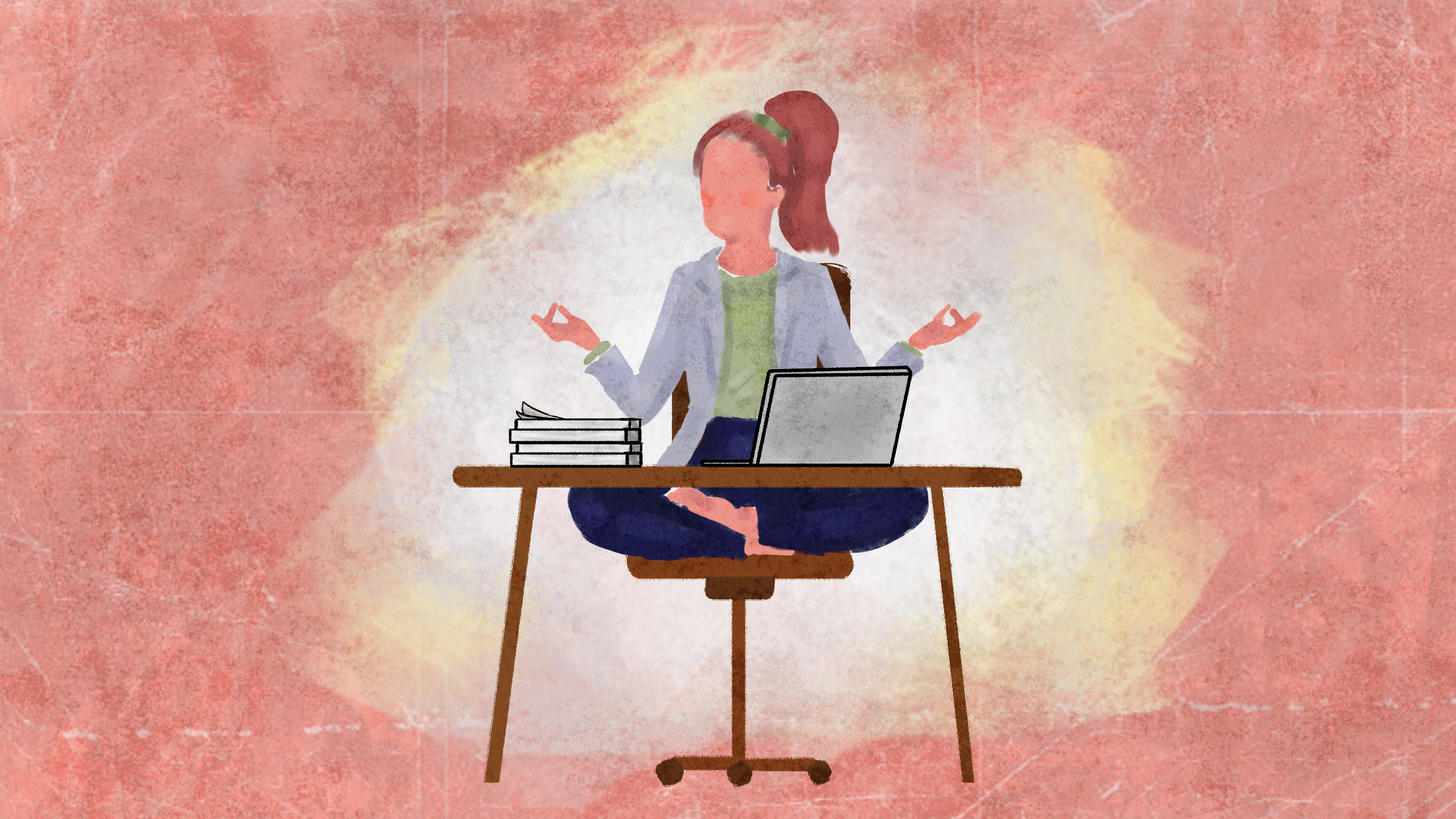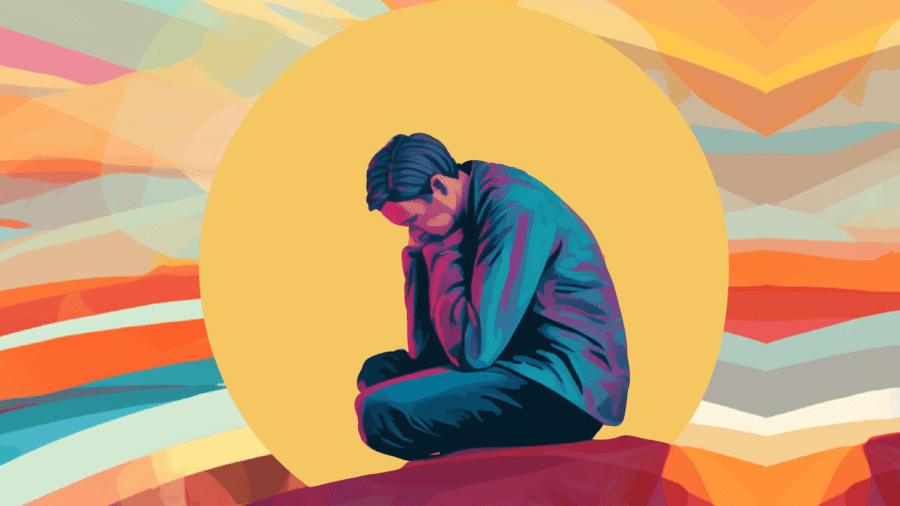
7 Core Exercises You Can Do at Your Desk to Improve Overall Energy and Focus Throughout Your Day
How much free time do you typically have on any given day?
Can you remember a time in your life when you were active for the majority of the day? As children, we are constantly active. We play sports, entertain ourselves by running around outside for hours, and even have a period of school dedicated to getting our daily dose of exercise in. However, as we begin to age, exercise becomes less of an expected daily occurrence and instead becomes an important aspect of remaining healthy as an adult.
If you’re like most people, you’re thinking, what free time? I hardly have enough free time to get my laundry done. We get it — life is busy. Between work, family life, and social activities, it can be immensely challenging to find enough free time in your day for all kinds of important things, let alone exercise. But what if there was an easier solution to get daily exercise without taking any time away from your already-busy schedule?
If you’re eager to learn how you can get exercise without sacrificing precious time, you’re in luck. Read on to find out why avoiding a sedentary lifestyle is crucial for those of us with desk jobs and how you can implement a few easy core exercises while at work to stay active and healthy.
The Consequences of a Sedentary Lifestyle
In order to keep both the body and the mind healthy, exercise is absolutely necessary. Participating in regular physical activity can enhance your health in a variety of ways, including increasing your cardiovascular health and the strength of your muscles while lowering your risk for developing chronic diseases.
On the other hand, the sedentary lifestyle that many people choose to lead in the modern era, along with a lack of opportunities for physical activity, has become a major cause for concern in terms of health. A number of unfavorable health outcomes including obesity, heart disease, diabetes, and depression have been connected to inactivity as a contributing factor.
Join In 200 Million+ On The Journey to Greatness
Physical Health
A person’s physical health can be adversely affected by a lack of physical activity to a large degree. The human body was built for movement, and idleness can bring on a variety of negative health effects.
One of the most obvious and well-known side consequences of not getting enough physical activity is obesity. A person will burn fewer calories and be more likely to gain weight if they are physically sedentary for long periods of time. Obesity is a significant contributor to the development of a number of long-term health problems such as coronary heart disease, diabetes, and several forms of cancer.
Keeping a healthy heart also requires regular participation in physical exercise. Because it boosts heart strength and lowers the chance of developing heart disease, exercise is one of the best ways to improve overall cardiovascular health. Research has shown that a lack of physical activity is associated with an increased risk of cardiovascular illness such as high blood pressure and heart attacks.
Physical activity also helps control blood sugar levels and lowers the risk of acquiring type 2 diabetes. An increase in body fat, which can contribute to insulin resistance and the development of diabetes, can be brought on by a lack of activity, which can lead to an increase in body fat.
Exercise is essential for preventing the loss of muscle mass and strength as we age, particularly because of the effects of muscle atrophy. It is possible for lack of physical exercise to lead to a decrease in muscle mass and strength, which can make it more difficult to conduct activities of daily living and can also increase the risk of injuries and falls.
Mental Health
In addition to the many physical effects a lack of exercise can bring on, a major negative impact can also be had on a person’s mental health if they do not get enough physical activity. It has been demonstrated that engaging in physical activity can boost mood, lower stress levels, and improve cognitive performance. On the other hand, a lack of physical activity has been related to an increased risk of mental health issues such as depression and anxiety.
Studies have indicated that engaging in regular physical activity can be an effective treatment for depression. Endorphins are naturally occurring chemicals that have the ability to lift one’s mood, and exercise is one of the best ways to combat stress and anxiety because it causes the body to naturally produce endorphins. In persons who are already at risk for developing depression, a lack of physical exercise has been linked to an increased chance of developing the condition.
Research has shown that regular exercise can also be an effective treatment for anxiety. A lack of physical activity can lead to emotions of anxiety and stress, as well as physical symptoms such as muscular tightness and headaches. These physical symptoms of anxiety and stress can also be caused by a lack of physical activity.
Memory, attention, and reaction time are all aspects of cognitive performance that have been demonstrated to be improved as a direct result of engaging in regular physical activity. It has been shown that a lack of physical activity can lead to a loss in cognitive performance, particularly in people who are older. Incorporating physical activity into your daily routine, whether it be going for a walk during your lunch break, playing sports, or simply going for a hike, can have a great impact on your general health and well-being. This is true regardless of the type of physical activity you engage in.
Exercise, particularly physical activity that involves the core muscles, can aid in improving cognitive function and increase our ability to focus. The good news is that there are a number of workouts that can be done right from your desk, which will help you remain healthy, energized, and focused throughout the day.
- Leg Raises While Seated
The muscles in the lower abdomen and hips are targeted by this exercise, which is both easy and effective to perform. To begin, you will need to adjust your posture so that you are sitting up completely straight in your chair and maintaining a flat footing on the floor. Raise your right knee toward your chest, pause for a count of five, and then slowly return it to its starting position. Perform the action with your left leg in the same manner, then repeat it ten times on each leg.
- Seated Spinal Twist
This is an excellent exercise for correcting poor posture and extending the muscles in the back as well as those in the hips. To begin this exercise, sit up tall in your chair and cross your right ankle over your left knee. You should feel a mild stretch in your right calf. Turn your upper body to the right and use the right hand on your right side to provide your right knee a gentle push while you twist your upper body to the right. After you have held the twist for five seconds, you can let go of it. On the other side, perform the same movement that you just did, and then perform ten repetitions of the exercise on each side.
- Seated Arm Raises
This exercise focuses on the shoulders and upper back, and it can assist in improving posture and relieve tension in those regions. To begin the exercise, make sure you are sitting up all the way in your chair and that your feet are resting flat on the ground. Raise both arms until they are level with your shoulders, and hold that position for the count of five. Bring your arms back down to your sides, rest them there, and repeat the exercise ten times in a row.
- Seated Knees-to-Chest
This is another excellent exercise for improving posture and relieving lower back pain since it targets the muscles in the hips as well as the lower back. To complete the exercise, begin by sitting up tall in your chair and bringing your right knee up to your chest while gently pulling it in with your hands. This will be one repetition.
After you have counted to five, release the position and bring your leg back down to its starting position. Perform the action with your left leg in the same manner, then repeat it ten times on each leg.
- Hip Stretch
By stretching the muscles in the hips and lower back, this exercise helps to improve flexibility and reduce tension in those areas. To begin the exercise, ensure that you are sitting upright in the chair that you are using, and then cross your right ankle over your left knee. Employing your left hand, apply light downward pressure on your right knee. After you have held the stretch for the count of 5, you can let go of it. On the other side, perform the same movement that you just did, then do ten repetitions of the exercise on each side.
- Torso Twist
To complete the exercise, begin by fully erecting your spine while seated on a chair, then twisting your torso to the right while applying a light amount of pressure with your right hand to the exterior of the chair. After you have counted to five, let go of the twist and move to the other side. Perform ten repetitions of the exercise on each side, and your posture and flexibility are sure to improve over time.
- Office Chair Dips
To complete this exercise, sit or stand at the edge of your desk, either using a stable office chair or just the edge of the desk itself, and place your hands on either side of your body, clutching the armrests or the edge of the desk.
First, ensure that both of your feet are firmly planted on the floor, then take one or two steps back and straighten your arms to lift the body. The next step is to lower your body by bending your arms at a right angle to your torso (this is called a tricep dip) and maintain this position for a few seconds before re-straightening your body while keeping it elevated over the chair. Start with 10 repetitions, and increase over time as you become more comfortable.
Build Your Focus and Energy by Exercising at Your Desk
Though we are all busy going about our normal lives, it’s important to ensure your body gets the exercise it needs to stay healthy, both physically and mentally. When you neglect this important aspect of staying healthy, you run the risk of developing further health complications due to living a sedentary lifestyle, not to mention developing mental health issues like depression.
Many of us simply cannot find the time for a standard gym workout, and that’s why we put together this article to help you get the exercise you need without stepping away from your desk. All you have to do is take the first step, and before you know it, daily desk exercises will become a standard part of your routine.
Greatness Authors
Greatness Authors is a collection of writers, thinkers, curiosity experts, and students of the world who are committed to bringing you the most up-to-date, impactful, and inspiring information surrounding Greatness topics.

Do You Have to Be a Morning Person to Be Successful? Here’s What Both Sides Have to Say

9 Reasons You’re Tired All the Time & How to 10x Your Energy

How to Have a Healthy Romantic Relationship Even if You Share Different Beliefs

The 7 Best Vitamins to Naturally Promote Better, Uninterrupted Sleep According to Shawn Stevenson

The Science of Forming Healthy Habits & Letting Go of Bad Ones, According to Author James Clear










